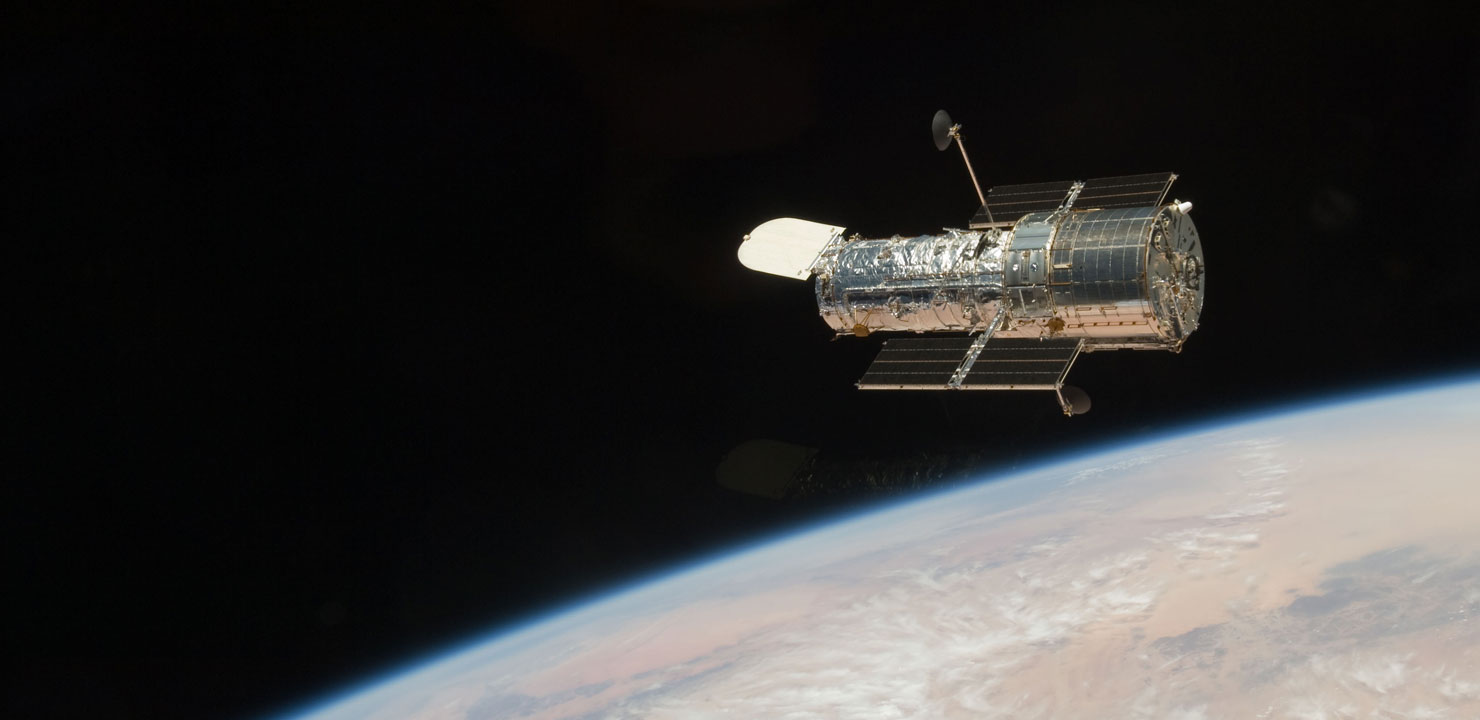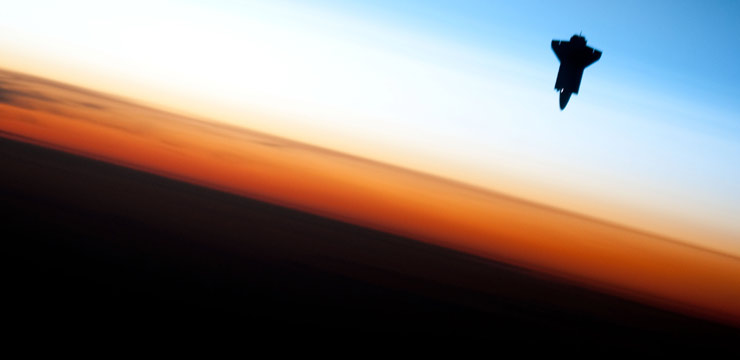
Hubble Servicing Mission is the Culmination of the Space Shuttle Program
June 2009 :
This past week, the crew of STS-125 on Space Shuttle Atlantis completed the fifth and final Hubble Space Telescope servicing mission. Usually, I will watch Space Shuttle launches and landings on NASA TV online, but only take a passing interest in the missions themselves by reading the occasional status update from NASA or even from one of the major national news outlets. However, for this mission I was tuned into NASA TV for the entire duration, from launch, grapple, five spacewalks, press conferences, and even the mundane tasks of heat shield inspections and other “housekeeping” tasks aboard Atlantis. I was so enthralled with the mission that when NASA posted the Hubble Release video on Youtube Tuesday night, taken from the flight deck of Atlantis, I watched it four or five times.
As someone who was born in the post-Apollo era, the Space Shuttle has been all I have seen of America’s manned spaceflight efforts. The first launch of Columbia on April 12, 1981 occurred when I was 7 years old, when I was barely cognizant of world events and what the Space Shuttle really meant. I knew we had gone to the Moon, but as a young kid it was “long before my time” and with regular Space Shuttle flights as long as I could recall, to me it was a given, something we had always done, and a routine endeavor which carried no significant meaning.
At the same time, my interest in space and astronomy was being greatly accelerated by the Voyager flybys of the outer planets. I don’t specifically remember the Jupiter flybys, but seeing the glossy photos of Saturn, its rings and moons in Time and National Geographic Magazine was truly awe-inspiring. A few short years later I got my first telescope and began my own exploration of the Universe, and I eagerly awaited January 1986, when Voyager 2 would beam back pictures from Uranus.
It was another event in January 1986, however, that would turn the nations attention on space exploration. On January 28, 1986, Space Shuttle Challenger would take its final flight, lasting just 73 seconds to, as Ronald Reagan so poetically described “slip the surly bonds of Earth to touch the face of God.”
I began to take notice of our manned spaceflight efforts and recognize the significance and importance of what we were doing. I made an effort to learn all I could about the Space Shuttle and read about the past missions to the Moon. Even though I looked forward to the resumption of Space Shuttle flights, and made an effort to watch every launch and landing, my primary interest remained in astronomy and the robotic exploration of the solar system.
Given my interest in astronomy, I had known of the Hubble Space Telescope since grade school and waited for it to go into operation with great anticipation. When the optical flaw was discovered soon after it was launched, I was a bit disappointed, but somehow I wasn’t concerned about it. I was certain that such an important project wouldn’t be abandoned. I figured since it was delivered to orbit by a Space Shuttle, it could also be retrieved by a Space Shuttle and perhaps brought back to the ground for repair work and relaunched on a later flight.
To my surprise, NASA did take action to repair the telescope, but not by recovering it—it would be repaired in flight! The repair mission was a success for the Space Shuttle, for the Hubble Space Telescope, and for the advancement of astronomical research.
In the years following, the Space Shuttles flew three more servicing missions to keep the Hubble Space Telescope in peak operating condition, but following the tragic loss of Columbia during re-entry on February 1, 2003, future missions that did not involve a docking with the International Space Station, including a fifth planned space telescope serving mission, were deemed too risky to undertake. It was also decided that the Space Shuttle fleet would be forced into retirement at the end of 2010, when the remaining ISS assembly missions were completed.
Fortunately NASA had an about-face and decided to proceed with the fifth Hubble servicing mission after a contingency plan was devised to rescue the Atlantis astronauts should the orbiter lose its flight-worthiness during the mission. All week, Space Shuttle Endeavor has stood at the ready if needed, but fortunately it was not. It did, however, provide an awe-inspiring sight of two Space Shuttles at both launch pads simultaneously.
Following the tremendous success and achievements of the STS-125 mission, I am left with the thought that this is the culmination of the entire Space Shuttle program. Sure there are still eight planned flights left, but none of them will embark on a mission like the HST servicing operations. STS-125 represented the fullest extent of the capabilities of the Space Shuttle program, and those capabilities will likely not be repeated for many years to come.
I’m saddened by the fact that the Space Shuttle fleet will be permanently grounded after next year. America’s only spacecraft I have known will no longer fly, and the next generation Orion/Ares spacecraft is still many years away. It is unfortunate that we are giving up a spaceflight capability which we have invested so much into, while we still have good hardware, infrastructure, and know-how to continue operating as long as the three orbiters have at least a few flights left in them. I see the STS-125 mission as the Apollo 17 of the Space Shuttle program.
The Orion/Ares project is certainly exciting—a new rocket with a new crew capsule with new capabilities, including the ability to go back to the Moon. I look forward and will watch with eager anticipation as this project progresses forward, but it will not be as flexible as the Space Shuttle has been with respect to working with hardware in orbit, such as the HST servicing missions. There is also the issue that the termination of a functional human spaceflight program without an immediate replacement is ceding America’s four-decade long leadership in manned space exploration. For the next four years, and likely more because development delays for a project of this scale are inevitable, America will have to outsource its access to space. The Space Shuttle is a true marvel of engineering, and its nearly three decades of service over 126 missions are a tribute to all those who made it possible.
The Hubble Space Telescope represents a perfect melding of NASA’s manned and unmanned space exploration programs that will be remembered as one of NASA’s greatest achievements. Because of the human touch that Hubble has received, not only has our knowledge of the Universe been greatly expanded, but the pictures it has provided have done great deeds in increasing the public’s awareness and interest in astronomy. With the newest upgrades, the telescope should provide another decade of service in astronomical research, a fitting tribute to Galileo on this International Year of Astronomy. The investments poured into this project will no doubt pay dividends for many generations to come.
Related Topics




